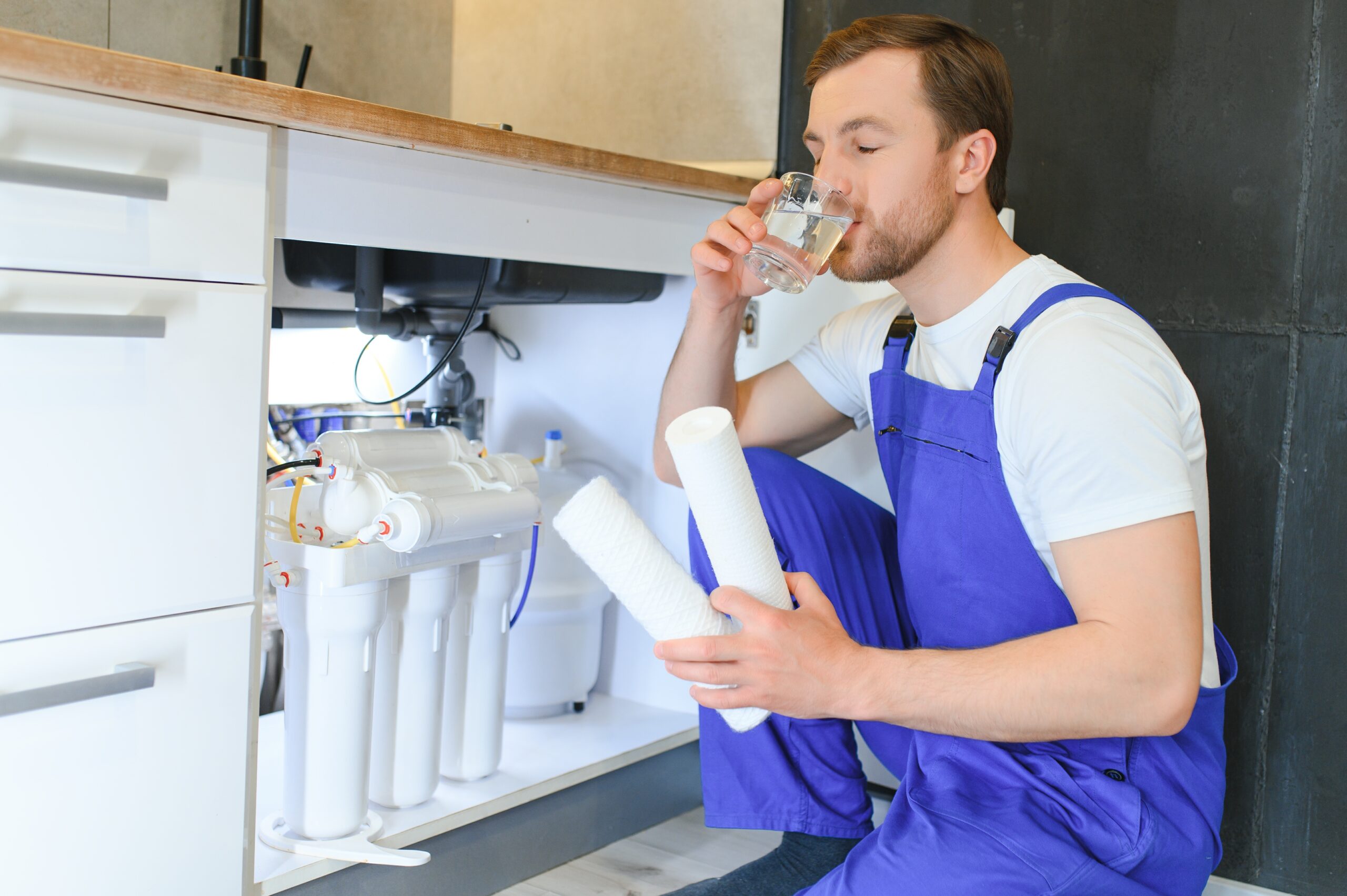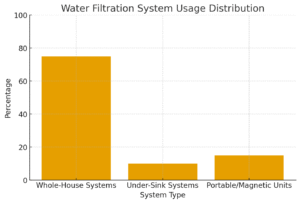
There’s a moment of realization most homeowners face: that thin white residue on your faucet, the cloudy glasses from your dishwasher, and the rough feeling after a shower, it’s all the work of hard water. At first, it feels like a minor annoyance. But when you start noticing clogged pipes, dull laundry, and rising maintenance bills, you realize it’s a bigger problem than expected. That’s when the idea of a water softener system starts making perfect sense.
Still, one question stands between you and better water: How much does it cost to install a water softener system?
We will help you walk through everything you need to know, from equipment prices and labor costs to ongoing maintenance and regional differences like installation costs in Texas. This guide is designed to be human, conversational, and deeply informative so you know exactly what to expect before calling your plumber.
Understanding What a Water Softener System Does
A water softener system removes minerals like calcium and magnesium from your home’s water supply, preventing scale buildup in pipes and appliances. This process not only protects plumbing but also extends the lifespan of your washing machine, dishwasher, and even your skin and hair health.
You’ll usually find three main types in the market:
- Salt-based systems (most common for whole homes)
- Salt-free systems (better for smaller households or people avoiding sodium)
- Ion exchange systems (ideal for high-hardness areas)
Each system comes with its own setup, lifespan, and maintenance requirements, all of which affect cost.
The Average Cost of a Water Softener System
Across the U.S., the average cost to install a water softener system ranges between $1,200 and $3,000. The national midpoint usually sits around $2,000, including both parts and labor.
However, if you’re in Texas, where hard water is more common, installation can slightly cost more, averaging $1,500 to $3,500, depending on system type and home size.
Type of Water Softener | Average Cost (System + Installation) |
Salt-Based (Whole House) | $1,500 – $3,000 |
Salt-Free | $1,000 – $2,500 |
Dual-Tank | $2,000 – $3,500 |
Magnetic or Electronic | $300 – $1,000 |
Under-Sink Unit | $250 – $800 |
Breaking Down the Costs: What Are You Really Paying For?
The price tag isn’t just about the system itself. A lot goes into getting your softener up and running correctly.
1. Equipment Cost
The system itself usually accounts for 60-70% of the total expense. Premium models, especially salt-based or ion exchange types, come with digital meters, automatic regeneration, and high capacity, making them more expensive but more efficient long-term.
2. Labor Cost to Install a Water Softener
Expect to spend $200 to $600 on professional labor. Complex plumbing layouts, electrical adjustments, or adding a bypass valve can push the labor cost closer to $800.
For Texas homes, installation labor may be slightly higher because many properties use larger capacity units due to harder water conditions.
3. Additional Materials
Sometimes, the plumber may need to add fittings, pipes, or drainage connections. These extras can add $50–$200 to the final bill.
Comparing Salt-Based vs. Salt-Free Water Softeners
To help visualize the difference between the two main systems, here’s a quick comparison:
Feature | Salt-Based System | Salt-Free System |
Initial Cost | $1,500 – $3,000 | $1,000 – $2,500 |
Maintenance | Regular salt refills | Low maintenance |
Effectiveness | Best for very hard water | Reduces scale, not minerals |
Environmental Impact | Uses salt brine | No salt discharge |
Common Use | Whole-house systems | Smaller homes or mild hard water |
Ion Exchange Water Softener Cost
Ion exchange systems, technically salt-based, use resin beads to replace hard minerals with sodium ions. They are very efficient, but often the most expensive type to install, ranging from $1,800 to $3,500.
They’re ideal for large families or properties in areas with extreme hard water (like much of Central and South Texas).
Whole-House vs. Under-Sink Installation
A whole-house water softener covers every faucet and appliance. While it can cost between $1,500 and $3,500, it saves you from future repair bills for clogged appliances and mineral buildup.
An under-sink system, on the other hand, is a budget-friendly choice. Costing around $250 to $800, it’s installed directly under the kitchen sink and treats only drinking or cooking water.
Here’s a simple cost distribution comparison:
Cost Comparison of Installation Types

Ongoing Maintenance and Service Costs
Buying a water softener is just the start. Maintaining efficiency requires minimal but consistent care.
Salt for Water Softener Cost: A typical family spends $5–$15 per month on salt refills for salt-based systems.
Annual Maintenance Cost: If you hire a professional for yearly service, expect around $100–$200.
Resin Replacement Cost: Every 8–10 years, you may need a resin replacement that costs about $200–$400.
In total, ongoing maintenance and service costs average $100–$300 annually, depending on system type and usage.
Water Softener Replacement Cost
Most softeners last between 10 and 15 years. Replacement usually costs 80–90% of the original installation since plumbing connections are already in place. That means replacing a unit can cost around $1,000–$2,500, depending on your model and any required upgrades.
Cost to Install a Water Softener in Texas
Texas water is famously hard. In cities like Austin, San Antonio, and Houston, hardness levels often exceed 200 mg/L, making water softeners a necessity rather than a luxury. The average water softener installation cost in Texas typically falls between $1,800 and $3,500, slightly above the national average due to higher demand and often larger capacity systems.
Here’s a regional breakdown for reference:
City | Average Cost (Installed) |
Dallas | $1,600 – $2,800 |
Houston | $1,800 – $3,000 |
Austin | $2,000 – $3,200 |
San Antonio | $2,200 – $3,500 |
ROI and Long-Term Savings
You might spend a couple of thousand dollars upfront, but the return on investment is clear. Softened water means cleaner plumbing, longer-lasting appliances, less soap use, and fewer maintenance calls.
Studies estimate homeowners can save $400–$600 annually in reduced energy bills, detergent use, and appliance replacement costs. Over 10 years, that’s several thousand dollars saved, essentially paying back the initial cost of installation.
Benefits of Installing a Water Softener
Aside from savings, there are everyday benefits you’ll start to notice within days:
- Softer skin and hair
- Cleaner dishes and laundry
- Longer lifespan for water heaters and washing machines
- Better water pressure
- Reduced plumbing buildup
These small lifestyle improvements often make the investment worth it even before the financial savings kick in.
How Often to Service a Water Softener
Regular checks every 6 to 12 months are usually enough. You can inspect salt levels, check for clogs, and ensure the resin bed is functioning properly. Most systems now have digital displays that notify you when it’s time for maintenance.
Factors That Influence Total Cost
Several factors can shift your total cost up or down:
- Water hardness level: The harder your water, the more advanced system you’ll need.
- Home size and plumbing complexity: More bathrooms or complex layouts increase labor time.
- System capacity: Larger tanks cost more but need fewer regenerations.
- Additional plumbing work: Replacing old pipes or adding drains raises costs.
These variables explain why quotes can range from $800 to over $3,500, even within the same city.
Choosing the Best Water Softener for Your Home
For small apartments or condos, a salt-free or under-sink system may be sufficient. For larger households or anyone in Texas with severe hard water, a whole-house salt-based or ion exchange system is usually the best investment.
Before purchasing, get a water test kit to measure your hardness level. If it’s above 120 mg/L, a professional-grade system will pay off in performance and longevity.
Finding the Right Professional
Working with a certified plumber ensures your installation meets plumbing codes and warranty requirements. Ask for itemized quotes that include:
- System model and warranty
- Labor and material breakdown
- Estimated installation time
Platforms like Angi, HomeAdvisor, and local directories can help you find the best choice plumber in your area with verified reviews.
Final Thoughts
Installing a water softener is one of those upgrades that touches every part of your daily life. From smoother skin and shinier hair to cleaner dishes and longer-lasting appliances, the benefits quickly justify the cost.
If you’re in a region like Texas, the decision makes even more sense given the high hardness levels. Whether you go for a salt-based system for full protection or a salt-free model for lighter needs, a professional installation ensures your home water quality stays pure and problem-free for years.
In simple terms: you’re not just buying a system you’re buying peace of mind, better water, and long-term savings that keep giving back every single day.
Also Read: How Much Cost to Install a Sump Pump?
